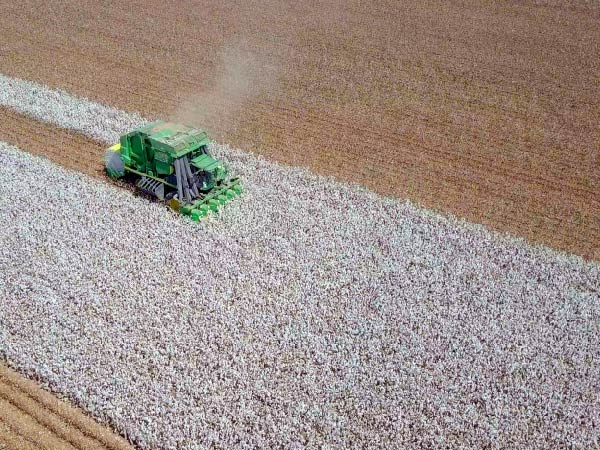This article is part of a series exploring CTRM and Commodity Management in cotton trading.
The term “Ags & Softs” is a useful shorthand to describe a wide range of different commodities with remarkably different supply chains and physical properties. If we are not careful however, use of the term risks reducing this varied and complicated set of distinct commodities into a one-size-fits-none commodity grouping.
In the field of CTRM and Commodity Management the distinction between “Ags and Softs” as a convenient shorthand vs using it to define all the processes and activities of the varied commodities is particularly important. It can mean either a system that manages the complexity of multiple unique commodities, or it can be used to describe a system that treats all these commodities as if they were the same or similar.
What is Ags and Softs CTRM?
Commodity Trading Risk Management Systems, or the more comprehensive Commodity Management Systems, need to manage the unique attributes and processes for each specific commodity they are used for. For example, if the system cannot display all the quality data of a particular cotton bale, it will be difficult to use it to generate accurate contracts, and position reports, and it will not have the granularity necessary for effective allocations or risk management.
An Ags and Softs CTRM should therefore mean a system that is designed to manage the unique processes and data requirements of many different soft commodities, with functionality specifically for cotton, amongst other commodities and products.
However, it could also refer to a CTRM system that is designed to be used by the complete Ags and Softs category, covering the processes they have in common, but not necessarily the commodity-specific ones. This can cause problems for any trader, but particularly in cotton, where there are more complexities than in many other soft commodities. A generic CTRM system can often lead to a need to add offline processes, such as people managing operations on spreadsheets, creating contracts outside of the system and manually copying information between documents – all introducing inefficiencies and operational risk, and making real-time reporting impossible.
“Ags and Softs” vs multi-commodity
So, an Ags and Softs CTRM manages multiple commodities in one system – either because it has the specific functionality to manage each commodity on an individual level, or because it assumes all their disparate processes can be managed within one generic system.
A CTRM that provides deep and specific coverage for each commodity can also be called a multi-commodity system. A multi-commodity CTRM system needs flexibility at its core so that it can support the unique systems not just of every commodity, but of every company using it.
When assessing CTRM and Commodity Management systems, one of the main considerations for any organisation is whether it can meet their specific requirements. Some CTRMs that claim to have functionality to support ags and softs are not true multi-commodity systems, and once you get into the details of cotton trading in these systems, it becomes apparent that they do not have the necessary flexibility, nor the cotton-specific features required. If you are considering replacing a CTRM system and are looking at Ags and Softs CTRM, be sure that it has the actual features you will need to truly manage your business from end-to-end.
Cotton is not the same as other commodities
For cotton merchants, there are several key features to assess to ensure that a new system will meet your requirements.
1. Inventory and position management
Position management can be a challenge if your CTRM does not capture data specific to cotton, as there are many different quality fields to manage for risk, pricing and allocations. Inventories therefore need to be viewable, filterable, and controlled based on these varied quality fields.
2. Pricing
Cotton quality data also feeds into pricing, as contracts can be priced against different exchange grades, but also include premiums and discounts based on a range of data such as micronaire, length and other quality data. And moisture content also needs to be factored into any calculations.
3. Workflows
If you are looking at a Commodity Management System that automates processes, controls, reports and document creation, like Gen10’s CommOS, you need to ensure the automation workflows are flexible enough, not only to handle cotton-specific workflows, but any variation between the locations you source from. For example, different shipping documents may be required, extra approvals may take place, or prepayment and payment may come at different stages of the process.
4. Logistics
Many Commodity Management System workflows are designed to automate and improve logistics. Logistics support can be a significant time saver and reduce many instances of risk, but if the logistics functionality is not both cotton-specific and flexible enough to work with your processes, it can cause more problems than it solves.
Cotton is a logistically challenging commodity. There can be thousands of bales attached to multiple shipment schedules in a contract, all with their own quality data to manage. As well as individual bale data, your system needs the specific functionality to manage virtual lots in bulk – creating shipping documents, managing lot references and weights, and creating container lists and recap reports.
5. Expert support
Commodity-specific software functionality is important, but that is only half of the story. Implementation projects and ongoing support are also much easier if the team at your technology partner understand your commodities inside out.
In summary, although cotton can be included in a generic Ags and Softs CTRM, it is dangerous to assume that any Ags and Softs system will have the specific functionality to support your cotton operations. There are certainly some multi-commodity systems that are both cotton-specific and can manage other agricultural commodities too, but the distinction is not always clear. It is therefore important to engage with any prospective technology partner to really understand what their system can offer for cotton, and make sure that their demos show how the system will work for your business.
To explore how Gen10’s multi-commodity CommOS is adapted specifically for our cotton clients, book a call with us now.
Or, hear it from a client instead in this interview with Brighann Cotton.



